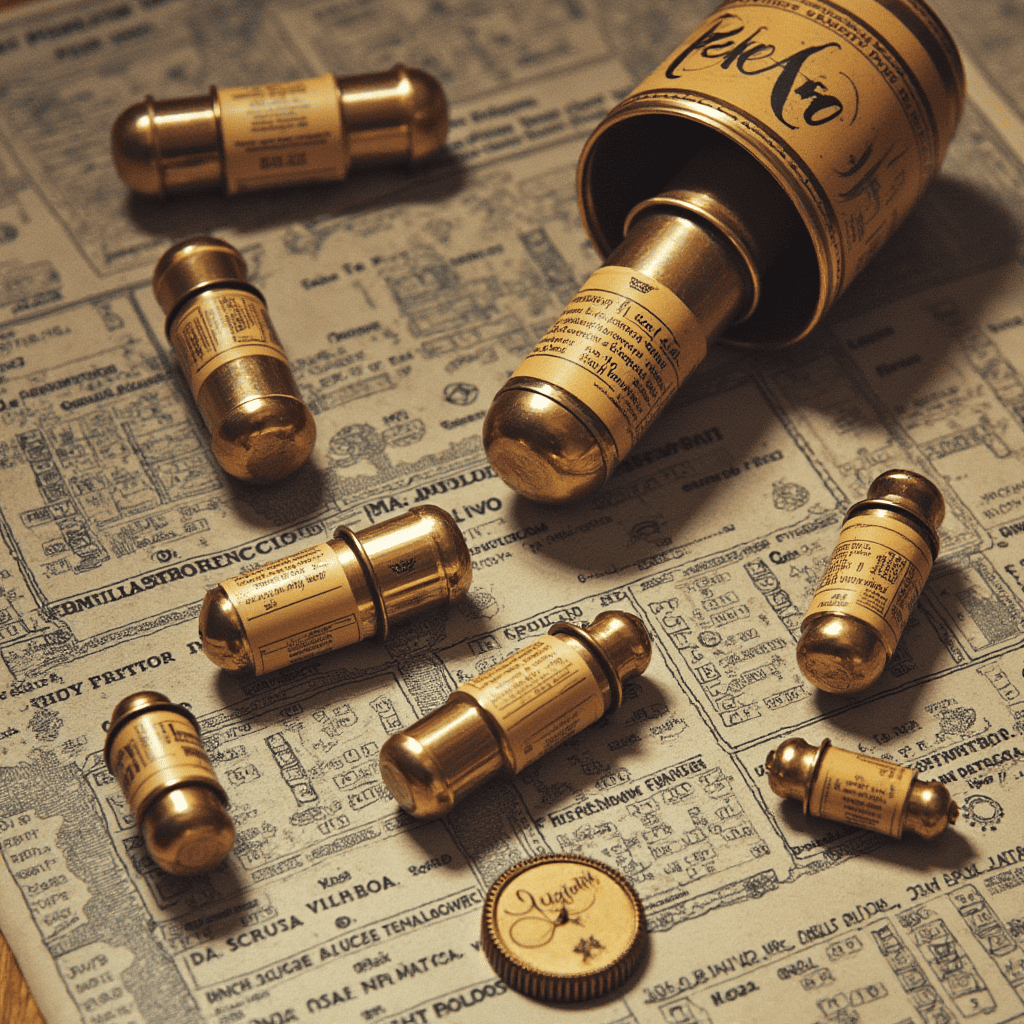Imagine stepping into a world frozen in time—a bustling Roman marketplace, an ancient Chinese emperor’s burial chamber, or a prehistoric village buried under layers of earth. These are not scenes from a fantasy novel but real glimpses into history, preserved through the remarkable work of archaeology. Archaeological discoveries act as time capsules, offering us a tangible connection to the lives, cultures, and events of the distant past. From the ash-covered streets of Pompeii to the silent ranks of the Terracotta Army, these findings allow us to piece together the stories of people who lived centuries or even millennia ago. They remind us that history is not just a collection of dates and names but a rich tapestry of human experiences waiting to be uncovered.
Archaeology is more than just digging up artifacts; it’s a journey of discovery that bridges the gap between the past and the present. Each excavation site is a window into a different era, revealing how ancient societies thrived, struggled, and ultimately shaped the world we live in today. Whether it’s the tragic story of Pompeii’s destruction or the awe-inspiring craftsmanship of the Terracotta Army, these time capsules provide invaluable insights into the complexities of human history. In this blog post, we’ll explore some of the most extraordinary archaeological discoveries and how they continue to deepen our understanding of the ancient world. Join us as we unearth the past and uncover the stories hidden beneath the sands of time.

1. The Concept of Time Capsules in Archaeology
What Are Archaeological Time Capsules?
Archaeological time capsules are sites, artifacts, or remains that have been preserved over time, offering a snapshot of a specific moment in history. These capsules can include entire cities buried under ash, tombs sealed for millennia, or even everyday objects left behind by ancient civilizations. The significance of these time capsules lies in their ability to provide tangible evidence of how people lived, worked, and interacted with their environment. Unlike written records, which can be biased or incomplete, archaeological time capsules offer a direct connection to the past, allowing us to piece together stories that might otherwise have been lost to time. They serve as windows into ancient societies, revealing details about their culture, technology, and daily life that written histories often overlook.
How Natural and Human Events Create Time Capsules
Time capsules are often created by sudden, catastrophic events or deliberate human actions. Natural disasters like volcanic eruptions, floods, and earthquakes can bury entire settlements, preserving them in remarkable detail. For example, the eruption of Mount Vesuvius in 79 AD encased Pompeii in ash, freezing the city in time. Similarly, floods can deposit layers of sediment over ancient sites, protecting them from erosion and decay. On the other hand, humans have also intentionally created time capsules, such as the burial of the Terracotta Army with China’s first emperor, Qin Shi Huang. These intentional burials were meant to serve the deceased in the afterlife but have since become invaluable sources of historical knowledge. Whether by accident or design, these events have allowed modern archaeologists to uncover and study the past in extraordinary detail.
2. Pompeii: A Snapshot of Roman Life
The Tragedy of Mount Vesuvius
The eruption of Mount Vesuvius in 79 AD was a catastrophic event that destroyed the Roman cities of Pompeii and Herculaneum. However, the very disaster that wiped out these cities also preserved them. The volcanic ash and pumice that buried Pompeii created a protective layer, sealing buildings, artifacts, and even human remains in a state of suspended animation. This preservation has allowed archaeologists to uncover a remarkably detailed picture of life in a Roman city nearly 2,000 years ago. From frescoes on the walls to food left on tables, Pompeii offers a poignant and vivid glimpse into the past.
Daily Life Revealed Through Artifacts
The artifacts unearthed in Pompeii provide a wealth of information about Roman culture, architecture, and social structures. Homes, markets, and public baths reveal how people lived, while graffiti on the walls offers insights into their thoughts and humor. The city’s layout, with its streets, shops, and temples, shows the sophistication of Roman urban planning. Archaeologists have even discovered tools, pottery, and jewelry, shedding light on the daily activities and craftsmanship of the time. These findings paint a picture of a thriving, bustling city that was suddenly frozen in time.
The Plaster Casts of Pompeii’s Victims
One of the most emotional discoveries in Pompeii is the plaster casts of its victims. When the ash and pumice hardened, they encased the bodies of those who perished, leaving hollow spaces behind. In the 19th century, archaeologists began filling these voids with plaster, creating detailed casts of the victims in their final moments. These casts capture the anguish and humanity of the people who lived in Pompeii, serving as a powerful reminder of the human cost of the disaster. They also provide valuable information about the health, clothing, and lifestyles of the ancient Romans.
3. The Terracotta Army: Guardians of an Emperor’s Legacy
The Discovery of Qin Shi Huang’s Tomb
The Terracotta Army, discovered in 1974 by farmers digging a well near Xi’an, China, is one of the most astonishing archaeological finds of the 20th century. The army consists of thousands of life-sized clay soldiers, horses, and chariots, each uniquely crafted and arranged in battle formation. These figures were buried with Qin Shi Huang, China’s first emperor, to protect him in the afterlife. The discovery of the Terracotta Army has provided invaluable insights into the Qin Dynasty (221–206 BCE), a pivotal period in Chinese history marked by the unification of the country and the establishment of centralized rule.
Craftsmanship and Military Insights
The Terracotta Army is a testament to the advanced craftsmanship and organizational skills of the Qin Dynasty. Each soldier is unique, with distinct facial features, hairstyles, and armor, reflecting the diversity of the real army. The figures were originally painted in vibrant colors, though much of the pigment has faded over time. The army’s arrangement and weaponry reveal the military strategies and technologies of the era, including the use of crossbows, chariots, and infantry formations. The level of detail in the statues also highlights the importance of the afterlife in ancient Chinese culture, as well as the emperor’s desire to maintain his power even in death.
The Unopened Tomb: Mysteries Yet to Be Uncovered
While the Terracotta Army has been extensively studied, the tomb of Qin Shi Huang itself remains unopened. Historical records suggest that the tomb is a vast, elaborate structure filled with treasures, booby traps, and even rivers of mercury. However, concerns about preserving the site and the potential dangers of disturbing it have delayed further excavation. The unopened tomb continues to fuel speculation and intrigue, with many wondering what other secrets it might hold. Future archaeological advancements may one day allow us to explore this final resting place, potentially revealing even more about the Qin Dynasty and its enigmatic ruler.

4. Other Remarkable Archaeological Time Capsules
The Dead Sea Scrolls: Preserving Ancient Texts
The Dead Sea Scrolls, discovered between 1947 and 1956 in the Qumran Caves near the Dead Sea, are one of the most significant archaeological finds of the 20th century. These ancient manuscripts, dating back to between the 3rd century BCE and the 1st century CE, include texts from the Hebrew Bible, as well as sectarian writings and apocryphal works. The scrolls provide invaluable insights into the religious and historical practices of Jewish communities during the Second Temple period. They have deepened our understanding of the development of the Bible, the diversity of Jewish thought, and the context in which early Christianity emerged. The preservation of these scrolls in the dry, arid climate of the Dead Sea region is a testament to how environmental conditions can create natural time capsules, safeguarding fragile materials for millennia.
Ötzi the Iceman: A Window into Prehistoric Life
Discovered in 1991 by hikers in the Ötztal Alps on the border between Austria and Italy, Ötzi the Iceman is a 5,300-year-old mummy that has provided an extraordinary glimpse into prehistoric life. Ötzi’s remarkably well-preserved body, clothing, and tools offer a snapshot of the Chalcolithic period, a time when humans were transitioning from stone to metal tools. Analysis of his remains has revealed details about his diet, health, and even the cause of his death—likely a violent encounter. Ötzi’s discovery has also shed light on ancient migration patterns, trade routes, and the daily lives of people in the Copper Age. His preservation in ice is a prime example of how natural conditions can create time capsules, allowing us to study ancient humans in unprecedented detail.
The Antikythera Mechanism: Ancient Technology Ahead of Its Time
The Antikythera Mechanism, discovered in 1901 in a shipwreck off the coast of the Greek island of Antikythera, is often referred to as the world’s first analog computer. Dating back to around 100 BCE, this intricate bronze device was used to predict astronomical positions and eclipses, as well as track the cycles of the Olympic Games. The complexity of the mechanism, with its gears and dials, demonstrates the advanced engineering and astronomical knowledge of the ancient Greeks. Its discovery has challenged our assumptions about the technological capabilities of ancient civilizations and highlighted the sophistication of their scientific achievements. The Antikythera Mechanism serves as a reminder that even the most advanced innovations of the past can be lost to time, only to be rediscovered centuries later.
5. The Role of Archaeology in Shaping Our Understanding of History
Connecting the Past to the Present
Archaeological discoveries have a profound impact on how we understand our history and culture. They provide tangible evidence of human achievements, struggles, and innovations, helping us to see the continuity between past and present. For example, the study of ancient Roman engineering has influenced modern architecture, while the deciphering of ancient texts has deepened our understanding of religious and philosophical traditions. Archaeology also fosters a sense of shared heritage, reminding us that the challenges and triumphs of ancient societies are not so different from our own. By connecting us to our roots, archaeology enriches our cultural identity and informs our decisions about the future.
Challenges in Preserving and Interpreting Time Capsules
While archaeology offers incredible insights, it also faces significant challenges. Ethical considerations, such as the repatriation of artifacts to their countries of origin, have sparked important debates about ownership and cultural heritage. Additionally, the impact of climate change, urbanization, and looting threatens the preservation of archaeological sites. Rising sea levels, for instance, are eroding coastal sites, while increasing temperatures are exposing and damaging ancient remains. Archaeologists must balance the urgency of excavation with the need to preserve sites for future generations. These challenges highlight the importance of international collaboration and sustainable practices in the field of archaeology.
The Future of Archaeology: New Technologies and Discoveries
The future of archaeology is being shaped by groundbreaking technologies that are revolutionizing how we explore and interpret the past. LiDAR (Light Detection and Ranging), for example, has enabled archaeologists to map vast areas and uncover hidden structures beneath dense vegetation, as seen in the discovery of ancient Maya cities in Central America. Artificial intelligence (AI) is being used to analyze vast amounts of data, from pottery fragments to satellite images, accelerating the pace of discovery. Advances in DNA analysis are also providing new insights into ancient migrations and relationships between cultures. These technologies are not only expanding our understanding of history but also making archaeology more accessible and inclusive. As we continue to innovate, the potential for new discoveries is limitless, promising to reveal even more about the rich tapestry of human history.
Conclusion
Archaeology is more than just a science; it is a journey into the heart of what it means to be human. Through the study of time capsules like Pompeii, the Terracotta Army, the Dead Sea Scrolls, and Ötzi the Iceman, we gain a deeper understanding of the lives, beliefs, and innovations of those who came before us. These discoveries remind us that history is not a static record but a living, breathing narrative that continues to evolve with each new find. They challenge us to rethink our assumptions, celebrate the diversity of human experience, and reflect on the lessons of the past. As we unearth these treasures, we are not merely uncovering artifacts—we are reclaiming stories that might otherwise have been lost to time.
Yet, the work of archaeology is far from over. With every discovery comes new questions, and with every answer, new mysteries to solve. The challenges of preserving these fragile time capsules—whether from climate change, looting, or the passage of time—underscore the urgency of our mission. But as technology advances and our methods improve, the future of archaeology holds limitless potential. From LiDAR mapping to AI analysis, we are poised to uncover even more about our shared heritage. As we continue to explore the past, we are not only honoring those who came before us but also shaping a future where history is accessible, inclusive, and deeply meaningful. The journey of discovery is endless, and with each step, we come closer to understanding the rich tapestry of human history.
